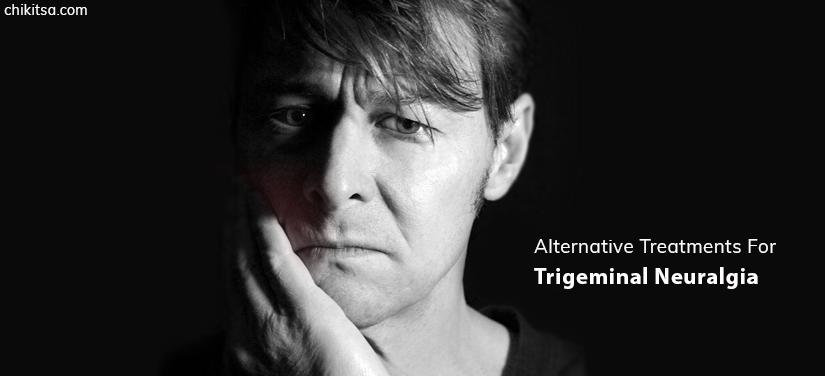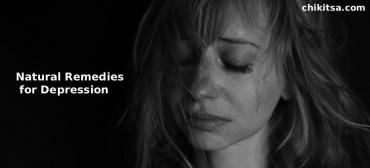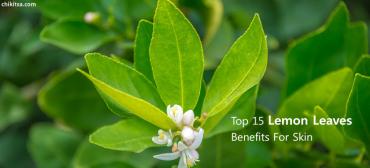Alternative Treatments For Trigeminal Neuralgia

Before knowing what alternative treatment options exist for the management of trigeminal neuralgia, it will be worthwhile to understand what exactly the trigeminal nerve is and what trigeminal neuralgia is all about.
Trigeminal Nerve
Nuclei present in the brain give rise to 12 major cranial nerves which are responsible for nervous supply to the region of head and neck.
Trigeminal is the 5th and the largest cranial nerve which provides nervous supply to the face, mouth, nasal cavity and also to the scalp. Likewise, the trigeminal nerve has 3 divisions which are:
- Ophthalmic – Nerve supply to the nose, paranasal sinuses and the upper face
- Maxillary – Nerve supply to the middle third of the face and upper teeth
- Mandibular – Lower face, tongue, jaw and lower teeth. Motor supply to muscle required for chewing (mastication) and other smaller muscles.
Trigeminal Neuralgia
According to the International Headache Society, trigeminal neuralgia can be defined as “painful unilateral affection of the face, characterized by brief, electrical, shock-like pain limited to the distribution of one or more divisions of the trigeminal nerveâ€.
Trigeminal neuralgia affects middle-aged or elderly people above the age of 60 years. It occurs more frequently in women.
Causes Of Trigeminal Neuralgia Include
- In nearly 80% of cases, the cause for trigeminal neuralgia is unknown.
- Ectopic generation of action potentials in pain-sensitive nerve afferent fibers (nerve fibers which carry information towards the brain and spinal cord) of the trigeminal nerve.
- Compression or presence of pathological abnormality which leads to demyelination of large nerve fibers which as coupled with smaller unmyelinated or poorly myelinated fibers.
- Compression of the trigeminal nerve by a blood vessel or a tortuous vein.
Signs and Symptoms Of Trigeminal Neuralgia
- Trigeminal neuralgia is unilateral, excruciating paroxysms of pain in the lips, gums, cheeks or chin, and rarely in the distribution of ophthalmic division.
- Nature of pain is sharp, stabbing, burning and superficial and is associated with flushing of the face.
- Duration of pain is brief, lasting from few seconds to up to 2-3 minutes but is so severe that the patient winces in pain.
- Paroxysms of pain can occur singly or in clusters which tend to recur frequently both during the day and night.
- Pain can occur even from exposure to a draft of cold air.
- Pain can occur spontaneously or from the movement of affected areas like eating, talking, cigarette smoking, brushing teeth or washing face.
- Trigeminal neuralgia is not associated with sensory loss.
Medications Commonly Used To Manages Cases Of Trigeminal Neuralgia Include
- Carbamazepine
- Phenytoin
- Lamotrigine
- Baclofen.
When Cases Cease To Respond To Medications, Surgical Approach Is Selected Which Includes Procedures Like
- Microvascular decompression of the trigeminal nerve
- Gamma knife radiosurgery
- Radiofrequency thermal rhizotomy
Alternative Treatments For Trigeminal Neuralgia
Unlike an empirical treatment provided by conventional medicine, alternative treatment methods provide a more holistic approach towards management or treatment of trigeminal neuralgia or any other disease entity for that matter.
Unfortunately, though, patients tend to approach an alternative medicine specialist after spending months or even years on conventional therapy. Nevertheless, the aim of any alternative therapy is to relive the patient’s complaints with the least possible or even no side effects.
Some Commonly Used Alternative Treatments For Trigeminal Neuralgia Include
1. Homeopathy
- Homeopathic system of medicine is based on the concept of “like cures likeâ€, which means disease producing powers of a drug are its disease curing powers. Homeopathy considers characteristic signs and symptoms for the selection of a remedy rather than the name of the disease.
- Homeopathic medicines are prescribed on the basis of individuality since the system considers each patient to be unique and there are certain features or characteristic symptoms which differentiate one patient from the other.
- Some commonly used medications in homeopathy along with their indications for treatment of trigeminal neuralgia are:
| Remedy | Indications |
| Aconite | Indicated for sudden onset of complaints from exposure to the draught of cold air. Neuralgia of the left side of the face with restlessness, tingling, and numbness. Pain in jaw. The face is red, hot and flushed. One cheek is red and the other is pale. |
| Arsenicum Album | Periodical burning pain in the head, worse from cold air. Tearing needle-like pains on the face worse from open air, better indoors. Circumscribed flushing of cheeks. |
| Belladonna | Neuralgic pains which come and go suddenly The face is red, bluish, hot, swollen and shining. Facial neuralgia with twitching of muscles and flushed face. |
| Chamomilla | One cheek red and hot, another cheek pale and cold. Facial neuralgia with jerking of the tongue and facial muscles. Stitching pain in jaw extending to inner ear and teeth. |
| Coffea Cruda | Facial neuralgia extending to molar teeth, ears, forehead and scalp. The dry heat of face with red cheeks. |
| Zincum Valerianicum | Violent neuralgic pains in the left temple and inferior maxillary region. |
2. Ayurveda
- The ayurvedic texts have described 11 types of headaches. Trigeminal neuralgia is termed as “Ananta Vata†in ayurved.
- Ayurveda texts mention that either vata dosha or vata along with kapha when gets aggravated, it seizes half of the head and causes severe cutting pain in half of the head, neck, eyebrow, temple, ear, eye or forehead.
- Ayurvedic Panchakarma treatments are proven to be useful in managing acute attacks of pain.
- However, prolonged relief from signs and symptoms can be achieved from purification procedures like vasti and virechana along with internal medicines.
- The ayurvedic treatment uses herbal oils for the restoration of imbalanced Vata and improves microcirculation within the nerves so that the nerves function at an optimum level.
3. Traditional Chinese Medicine
- The Traditional Chinese Medicine (TCM) is based on the concept of yin (negative, dark and feminine) and yang (bright, positive and masculine).
- According to the TCM, trigeminal neuralgia occurs as a result of the following:
| Cause | Signs and symptoms |
| Exterior (wind/cold invasion) | The acute onset of pain. Severe pain lasting for few seconds to few minutes several times in a day. Nausea, vomiting, fever with chills, cough, headache, body ache and joint pains. Tongue – Thin, white coating |
| Interior (liver/stomach fire) | Severe pain with irritability. Thirst, indigestion, constipation, heartburn, acid reflux, vomiting, dry mouth, anxiety, and depression. Tongue – Yellow, dry coating |
| Interior (yin deficiency) | Pain which is of gradual onset, malar flush, and pain in the lumbar region Tongue – Red without any coating |
- Acupuncture along with the use of Chinese herbs has been found to be effective in relieving pain in trigeminal neuralgia with satisfactory results in a very short time.
4. Physiotherapy
- Cranio-sacral therapy is known to reduce pain intensity in patients with trigeminal neuralgia.
- Improving fluid exchange and enhancing draining with the help of manual evacuation of lymphatic pathways works beneficially to support the body’s ability to promote healing.
- Medical therapy is often integrated with physiotherapy in order to achieve better and long lasting results.









